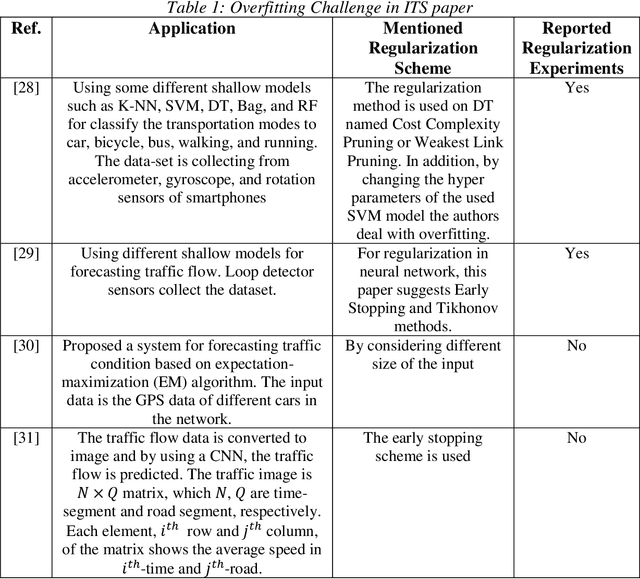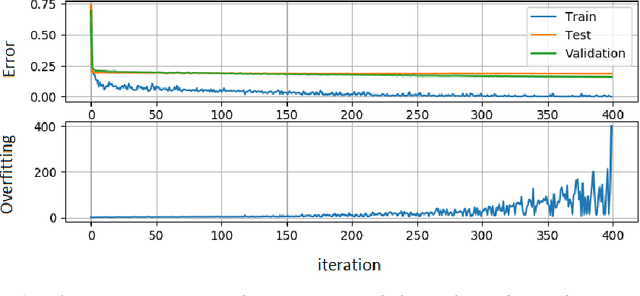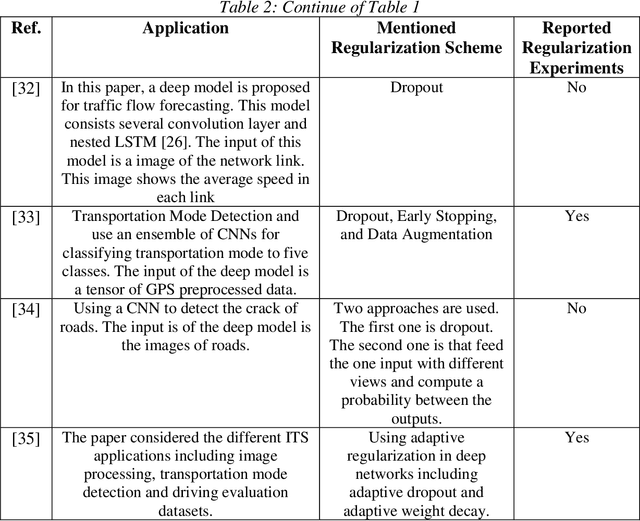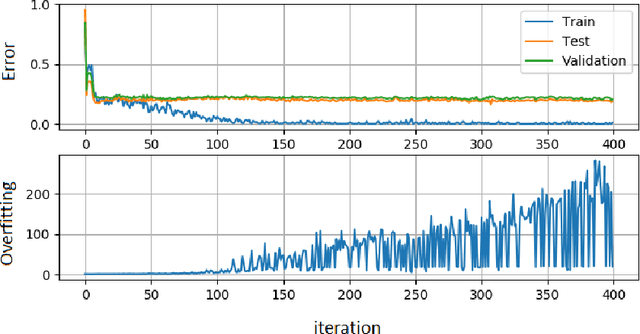Regularized Deep Networks in Intelligent Transportation Systems: A Taxonomy and a Case Study
Paper and Code
Nov 08, 2019



Intelligent Transportation Systems (ITS) are much correlated with data science mechanisms. Among the different correlation branches, this paper focuses on the neural network learning models. Some of the considered models are shallow and they get some user-defined features and learn the relationship, while deep models extract the necessary features before learning by themselves. Both of these paradigms are utilized in the recent intelligent transportation systems (ITS) to support decision-making by the aid of different operations such as frequent patterns mining, regression, clustering, and classification. When these learners cannot generalize the results and just memorize the training samples, they fail to support the necessities. In these cases, the testing error is bigger than the training error. This phenomenon is addressed as overfitting in the literature. Because, this issue decreases the reliability of learning systems, in ITS applications, we cannot use such over-fitted machine learning models for different tasks such as traffic prediction, the signal controlling, safety applications, emergency responses, mode detection, driving evaluation, etc. Besides, deep learning models use a great number of hyper-parameters, the overfitting in deep models is more attention. To solve this problem, the regularized learning models can be followed. The aim of this paper is to review the approaches presented to regularize the overfitting in different categories of ITS studies. Then, we give a case study on driving safety that uses a regularized version of the convolutional neural network (CNN).
 Add to Chrome
Add to Chrome Add to Firefox
Add to Firefox Add to Edge
Add to Edge